| Newer Posts | Older Posts |
Increasing Home Values Can Lead To Increased Real Estate Taxes |
|
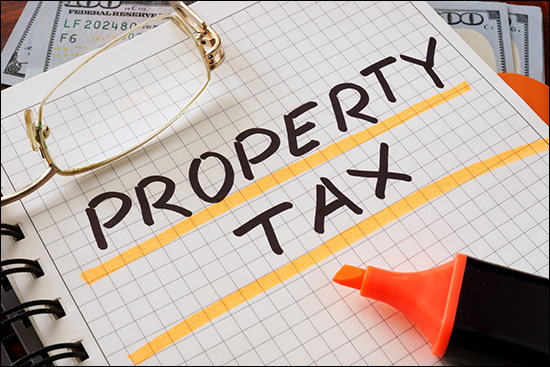 It's exciting if your home value is increasing, right? Well -- mostly, it seems. Certainly, if you bought your home for $250K and it is now worth $260K or $270K or even $300K -- that can be a good thing. At some point in the future, you'll recoup that equity when you sell your home -- plus or minus any shifts in value between now and then. But in the near-term, increasing home values can actually hurt a bit. The amount of real estate taxes that a homeowner pays to their locality (city, county) are based on two factors -- the assessed value of the home, and the local real estate tax rate. In Rockingham County, the current real estate tax rate is $0.74 per $100 of assessed value....  Tomorrow, the Rockingham County Board of Supervisors will hold a public hearing to receive input before adopting a real estate tax rate for fiscal year 2019 -- which runs from July 1, 2018 through June 30, 2019. But here's the thing -- even if the tax rate remains the same (at $0.74) there are many homeowners who will see an increase in their real estate taxes -- because of increases in home values, and thus increases in assessed values. Rockingham County revises their property assessments once every four years -- and the most recent increase resulted in a 2% increase in the assessed value of an average home. This is good news for the County, as the increase in property values, even with no change in the real estate tax rate, will likely generate over $2 million in additional tax revenue. It is sort of good news for County property owners -- because it means your property value is (likely) increasing -- but it is also potentially bad news, as your tax bill will likely be increasing. To put some numbers to it:
And -- you can both celebrate and mourn the news that property values are increasing, and that your real estate tax bill likely will be as well. | |
Public Hearing on Proposed Changes to Exit 245 Interchange |
|
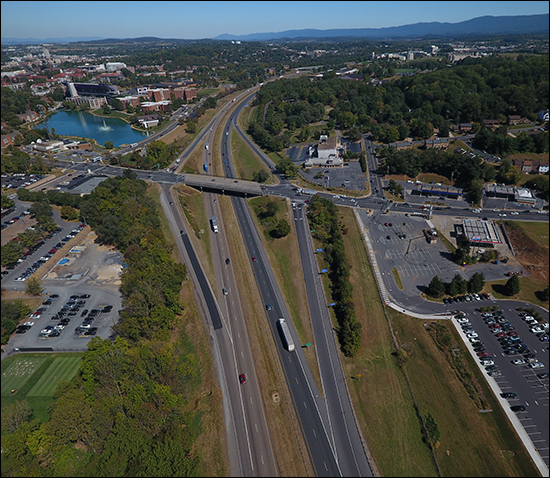 The northbound off-ramp from Interstate 81, at Exit 245, might change in the near (?) future -- based on a proposed realignment of the exit ramp with Forest Hill Road. Do you have an opinion on this proposed change? Do you have questions? Be sure to attend the public hearing.... Design Public Hearing Wednesday, February 28, 2018 from 4:00 PM - 6:00 PM City Council Chambers (409 S Main St, H'burg) This will be an open-house style public hearing where citizens are invited to learn about, ask questions, and provide feedback on plans to realign the northbound off-ramp to intersect Port Republic Road directly across from the Forest Hill Road intersection. In the case of inclement weather, the public hearing will be rescheduled for March 8, 2018 at the same time and place. Learn more about this project on the City's website here. Here is an illustration of the proposed realignment....  | |
Updated City GIS Mapping System |
|
 The City of Harrisonburg just launched an updated GIS system, and it's worth checking out the next time you are trying to explore a property in the City of Harrisonburg. One of my favorite parts of the new GIS system is that it is mobile-friendly and you can explore property data much more easily from your phone or tablet. Here is the GIS system: http://www.HarrisonburgVA.gov/GIS Here is the update from the City.... The City of Harrisonburg's Geographic Information System (GIS) recently improved its mapping system and GIS viewer online to allow for more capabilities. The City's GIS technology combines layers of information to give the public a better understanding of a specific area. Different layers of information can be combined to tell a story about that piece of property. Some layers include streets, public facilities, parks, property lines, and city limits. Information about specific parcels of property is also available through the GIS system. The improvements to the City's GIS system have enabled it to be more user friendly and responsive, which allows it to work on a desktop computer or smartphone. When the data and maps are updated, it will be reflected online almost immediately. "The GIS system is a resource that holds a wealth of information, which is free and accessible to the public," explained Nate Rexrode, GIS Administrator. "We encourage members of the public to take a look at the site and utilize the information that is available to them." Property owners are encouraged to visit the GIS site for zoning information, acreage, voting and school districts, and data specifically involving their property. This site is also beneficial for realtors, surveyors, engineers, planners, and those who often research property-related information. | |
Owners of median priced City homes might have to pay $26 more per month to fund new City high school |
|
 Numbers are funny. All of these statements are true based on current projections:
I'm guessing that if you ask most parents of school aged kids in the City if they'd be willing to pay $26 per month such that their child would not be in an overcrowded, not-so-ideal, learning environment for high school, they'd likely be quick to say yes. That said, this $26 per month increase would need to be paid for 25 years -- but for a parent of a child in the school system, I'm guessing that would still seem to be a reasonable cost. I'm also guessing that City property owners who do not have children in the local school system would LOVE for their property taxes to NOT increase. And I'll even go a step further -- I am guessing that they don't really want school aged children to have an overcrowded, not-so-ideal, learning environment -- it's probably just more about the increased tax burden. Anyhow. Numbers are funny. Read today's Daily News Record article, and feel free to form your own opinions. There seem to be plenty of them circulating through our community about this topic. :) | |
How should land just outside Harrisonburg, in Rockingham County, be used in the future? |
|
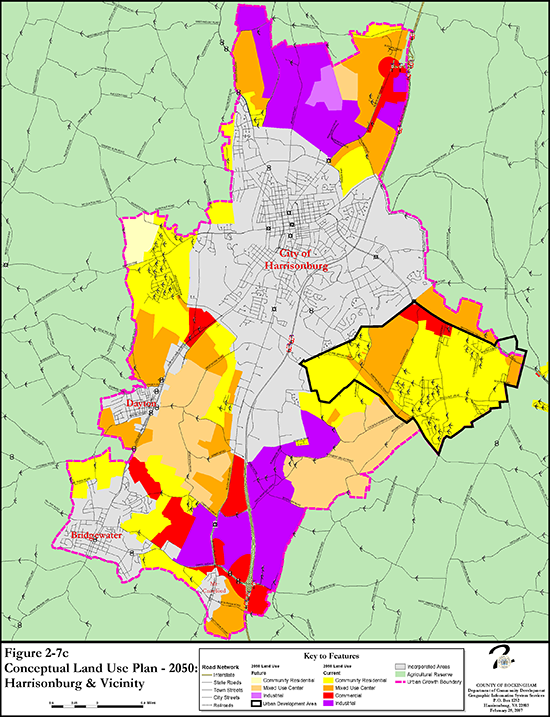 Just as there is a land use guide for the City of Harrisonburg, there is also a Conceptual Land Use Plan for many areas of Rockingham County. Above, I have included the Conceptual Land Use Plan for the areas just outside Harrisonburg (but in Rockingham County) for the year 2050. You can find many more maps -- showing different time frames, and different areas of the County -- on the County's comprehensive plan website. Of note, as you glance at the map above (or this PDF) you might note that the bright yellow regions are intended to be developed for residential use. It is not surprising that the largest contiguous section of such land is just East of the City, in what is referred to as the Urban Development Area. Industrial uses seem to largely be focused just North of the City and just South of the City. Enjoy exploring many more maps here. | |
How should land in Harrisonburg be used in the future? |
|
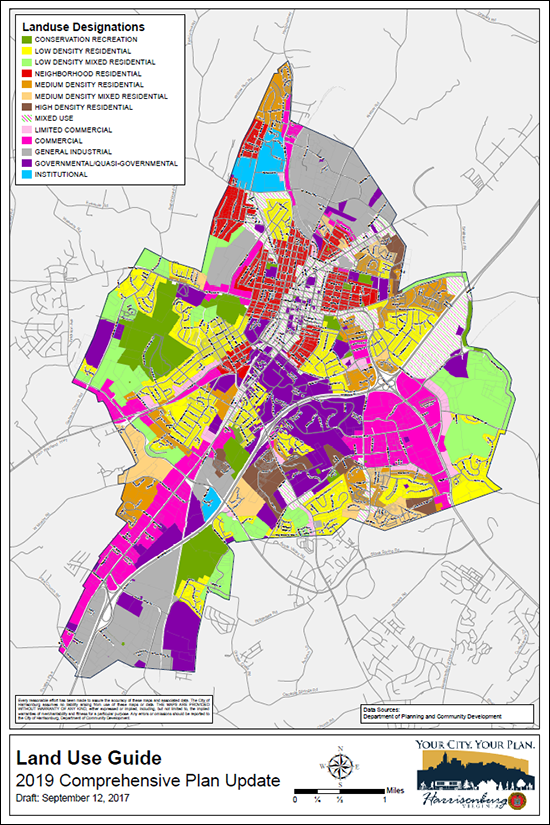 There's a map for that, it seems! Check out the Draft Comprehensive Plan (chapters) for the City of Harrisonburg where you'll find all sorts of interesting maps, including:
The Land Use Guide (draft for inclusion in the 2019 comprehensive plan is shown above) recommends future land uses, but is not regulatory. That is to say that if a piece of undeveloped land is zoned for residential use, but is shown in a "Mixed Use" area in the Land Use Guide map, then staff would likely look favorably upon a future request for rezoning to a mixed use designation. Check out all of the draft chapters of the Comprehensive Plan here. | |
High Level Overview of Albert Long Park |
|
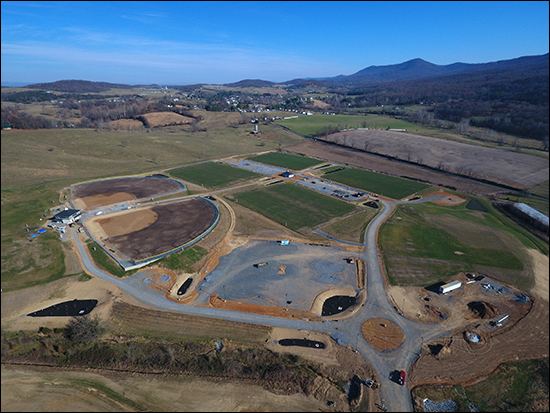 click here for a larger version of this image While you might not know it from driving by on Route 33 East, construction is steadily moving along on Albert Long Park, located on the North side of Route 33 just before Indian Trail Road / Cross Keys Road when heading away from Harrisonburg. I don't have any specific updates on the park plans or timeline other than having noticed (from Indian Trail Road) that the site work and development of the park is progressing nicely. Below is the Master Plan for the park as approved in 2014. 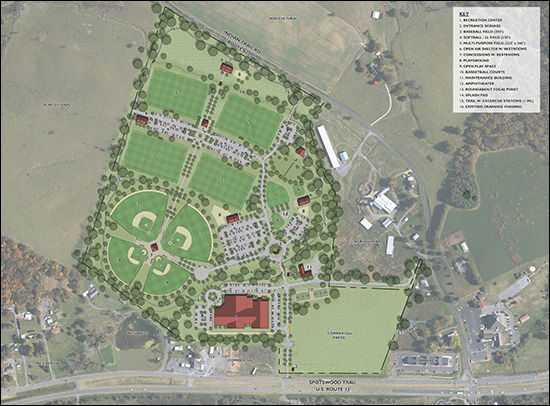 click here to download the Master Plan as a PDF | |
Can New Homes Be Built That Buyers Will Want and Can Afford? |
|
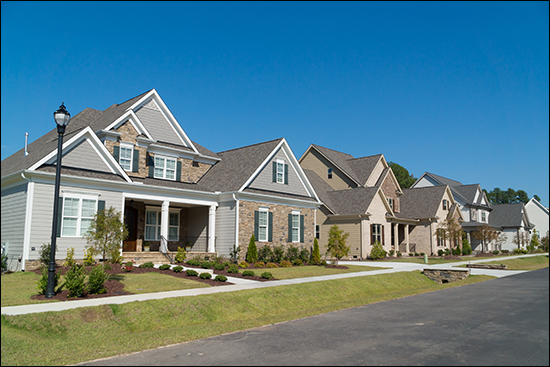 OK -- lots of great thoughts from folks over on Facebook yesterday, and in person as I talked to people around town yesterday, after I suggested that our market needs lots of mid size detached homes to be built. I'm going to think aloud about all of that by capturing a bit of that conversation here.... --- WHAT TYPES OF HOUSES? I had suggested that homes along these lines were needed for current townhouse owners that want to buy their first detached home....
These types of homes have not been built in large quantity over the past ten years, and I believe there are plenty of buyers who would love to buy this type/size of home. --- COSTS ARE HIGH BEFORE THE ACTUAL CONSTRUCTIONAs Jim, Jerry and Keith pointed out, It is expensive (!!!) to create a developed lot. The cost of building roads, installing water an sewer lines, utility hook up fees, etc. all add up to make the costs quite high even before construction (pouring the foundation, framing the home) begins. And as Nate points out -- if the land cannot be purchased by a builder at an affordable price, the rest of the equation downstream won't work out. High costs for land, plus development costs, plus building costs, will result in unrealistically high prices for homes, that then won't be affordable (or desirable at that price point) to buyers. Nate then ponders whether larger, regional builders can do better than local builders in this regard based on economies of scale. I'm not sure if the savings would be in buying a larger tract of land, lower development (infrastructure costs), or lower building costs -- but I wonder the same. Gary and Renee also point out that some of these "costs before you even start building" are high because of utility connection fees, requirements for stormwater management, proffers, etc., that are coming from government regulations and development requirements. Ginny points out that the final cost of a house is largely dependent on the initial land and development costs. Thus, to have smaller single family homes built, we may need to see smaller lots, to keep those initial costs down. --- DEMAND NEEDS TO DISCUSSED WITHIN THE CONTEXT OF PRICE As Jim succinctly puts it, "If I want something I can't afford then it isn't really demand." An excellent point -- which means that we need to think about (and talk about) the demand for the homes I outlined above (for example) within the context of the price for bringing such a home to market. If the houses I described (1750 / 1950 / 2150 square feet) were able to be sold for $150K, $175K and $200K (obviously not realistic) then clearly, there would be a ridiculously high demand for them. I believe that if the houses I described could be sold for $250K, $275K and $300K there would still be a strong demand for them. But, clearly, if the homes could not be sold for any less than (I'm exaggerating again) $400K, $425K and $450K then likely NOBODY would want want to buy them. So, yes, when we talk about demand for a particular type of housing, it likely should be -- as best as possible -- set within a context of price. That price-based demand can then be compared to development and building costs to see if developer and builders can bring such a product to market at a price that it will sell. --- WHAT SHOULD WE BE ADDING TO OUR HOUSING STOCK? As Jim also points out, the high demand and low supply environment we're in right now COULD cause a large quantity of under-qualified builders to start building homes. This doesn't help, in the long-term, as it is adding lower quality homes to our housing stock, which I do not believe helps our community in the long-term. Jim goes on to suggest that we should be ensuring that we are adding quality homes to our housing stock. I agree -- though I do think that we need to find a balance. If the quality of materials and finishes is too high, we're pricing ourselves out of the ability to meet the demand we're discussing. Michael takes us in a different direction when considering what should be built. He points out that even beyond building for all of those townhouse buyers (the original reason for my suggestion that we need to build mid sized detached homes) that he believes there is also a significant demand for affordable housing for the elderly in our community. He points out that retirement communities are not affordable for everyone, and plenty of older adults in our community would love to move into an affordable, (one-level), wheelchair accessible home. Again -- another market segment where we are not seeing much new construction. --- WHAT ARE PEOPLE GOING TO DO IF WE DON'T BUILD THESE HOMES? Ginny suggests that homeownership may be delayed for some families. A good point -- if the homes they want aren't available at the prices they can afford, perhaps they'll keep renting or keep living in the townhome they purchased. Ginny also suggests that we'll see more remodeling or upgrading of current homes to accommodate growing families, which also makes sense. Keith suggests that people will just have to move to some of the more affordable towns surrounding Harrisonburg. There are more affordable detached housing options when you look to Broadway, Timberville, Elkton and Grottoes. So, perhaps the townhome owners will just have to settle for a bit of a commute in order to buy a mid sized detached home that fits their budget. Jim suggests that maybe higher costs for new homes means that it will take much longer for families to be able to buy a home -- and perhaps they will have to stay in one home for a lifetime, instead of moving every 5 - 7 years. Gary concludes that many in our community may simply have to rent, or keep living in a townhouse, because of the cost of building new homes. --- CONCLUSIONS There were many other great points made, and discussions beginning, so thanks to all who engaged in this topic. A few big picture thoughts that come to mind for me....
Keep the conversations going, folks, on Facebook, with me, with each other. As Jim points out, "we're going to have to do housing differently than it has been built in the past 30 years if we are going to provide sustainable, affordable housing." | |
Make your voice heard in the updated Comprehensive Plan for the City of Harrisonburg |
|
 The City of Harrisonburg is in the midst of updating the Comprehensive Plan for the City. As per the City.... The Comprehensive Plan presents a vision of Harrisonburg's future. It identifies steps to move toward that vision by providing information about current conditions, long-term goals and objectives, and recommended implementation strategies. As described in the Code of Virginia, the Comprehensive Plan is general in nature. Harrisonburg's Plan addresses a wide range of issues including but not limited to: land use, housing, education, transportation, recreation, the preservation of historic and natural resources, and economic development. The plan serves as a long-term guide for the community, and it helps City leaders with setting policies and decision-making. So, basically, what do you want the City of Harrisonburg to be in 10 or 20 years? Discussions taking place and decisions being made right now will affect that future, and you have the opportunity to be a part of the conversation! Better yet -- there are several Public Workshops coming up that will allow you to chime in on topics near and dear to your heart.... Education; Arts, Culture, and Historic Resources; and Community Engagement & CollaborationSo, mark your calendars, and get involved in the discussions and decisions to help shape the future our our great City! Also of note.... Lots of Q&A's about the Comprehensive Plan update can be found here. General information about the Comprehensive Plan update can be found here. | |
Price Distribution of Single Family Housing Stock in the City of Harrisonburg |
|
 OK -- Take 2 -- Based on some feedback, in smaller price increments this time.... Forget about what actually SELLS in any given timeframe, or even what is available FOR SALE at any given point in time. Let's get down to what housing actually EXISTS in the City of Harrisonburg. The graph above shows the number of single family detached homes (Use Code 006 in the City's property database) that exist in the City of Harrisonburg in (120 different price ranges. The homes are sorted into these price categories based on their 2017 assessed values. So -- what surprises you? If more single family homes are to be built in the City, what price range should they fit into? | |
Harrisonburg could never have enough student housing! |
|
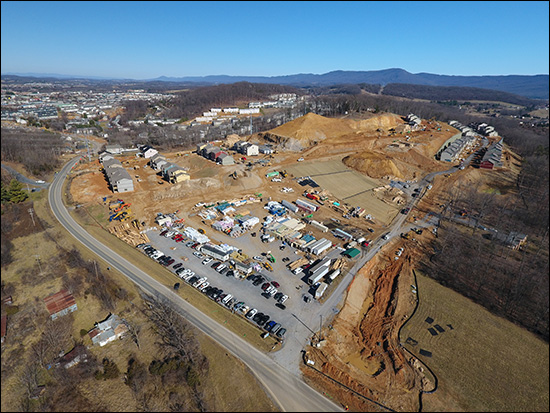 OK, OK, that's probably not true -- Harrisonburg probably does not have an infinite need for student housing. Just consider my title, then, to be an intro to all of the alternative perspectives that have been shared with me since I wrote these two posts.... Does Harrisonburg need more Off Campus Student Housing? Does New College Student Housing Increase the Demands on Local Elementary Schools? OK -- here goes -- all the reasons I might be wrong, and all of this new student housing might be OK, or even a good thing.... 1. JMU is growing! All of this student housing is necessary -- JMU is continuing to grow, and they are not building on campus fast enough for their growth, so the private sector must build and rent housing to students in order to meet that growing demand. 2. Denying growth just pushes it elsewhere. If the City decided to stop permitting new student housing communities to be built, that would just push developers to build them in the County, or push students to live in otherwise owner occupied neighborhoods. 3. This is an affordable way to get workforce housing. There isn't much truly affordable rental housing being built -- and older student housing complexes being effectively turned into workforce housing by virtue of students being attracted to new student housing communities is not necessarily a bad thing. It may be the most affordable way to create affordable or workforce housing. 4. Bring on the wrecking ball. If even more student housing is built, the rental rates will fall even lower on the oldest complexes, devaluing those properties to the point where it will make sense to just knock them down and build new housing -- thus, eliminating the older, outdated housing. 5. How much regulation do you want "the government" to do? If the government (planning commission, city council, staff) should start making judgement calls about how much student housing is too much student -- and thus regulating what landowners (and student housing developers) can and cannot do -- should they also start governing other segments of the private sector? Should they regulate how many hair salons exist? How many banks are permitted to operate? How many restaurants can open? How many Realtors can sell homes? :) OK -- again -- I don't necessarily agree with all of the perspectives above, but I believe it is important to consider these counterpoints when thinking about how our community should be planning for the future as it pertains to student housing, land use, property taxes, schools, etc. And, as I mentioned to a reader in response to their comments.... I don't know if new student housing projects should or should not be denied - but I think the local community needs to fully understand the impact of continuing to approve more student housing communities. If older student housing communities become workforce housing, great, no problem -- but let's realize that this is the result of approving new student housing communities, and make sure that infrastructure (schools, for example) are in place for the new workforce housing that we have indirectly created. | |
Does New College Student Housing Increase the Demands on Local Elementary Schools? |
|
 Traditional logic would say no -- the construction of new college student housing in Harrisonburg won't increase the load on elementary schools, as most college students do not have elementary school aged children.... Going a step further, I would guess that some local government staff and elected officials MIGHT (?) use this traditional logic when thinking about whether to approve rezonings, or other approvals, for new student housing to be built in the Harrisonburg area. But wait - what if the following sequence happens (thanks Deb, with some revisions)....
I think we have seen this happen over the past 20 years in Harrisonburg, in cycles, as large quantities of student housing is built in waves. And think about it, from the other direction, for a moment -- we all know that the local elementary school population is growing -- but why, and where? It's not as if local developers and builders are out building an extraordinary number of townhomes or starter homes for young families, causing an influx of new elementary school students. So -- if the elementary school population is rising, and it's not because of an increase in the stock of owner occupied real estate in Harrisonburg, then.... 1. Perhaps this elementary (or K-12, really) school enrollment growth is, contrary to what we'd otherwise believe, a direct result of an increase in college student housing. 2. Perhaps we need to think about the fiscal impact of educating more elementary (and then middle and high) school students when we think about approving yet another student housing complex. 3. Perhaps, if building new student housing when we might not really need it, leads to increased demands on our local K-12 schools, then maybe we need to pay more attention to whether that student housing is needed. Just some thoughts to ponder as we think about and plan for the future here in the City of Harrisonburg -- and Rockingham County. | |
Can this house be rented to a large group of college students? |
|
 With great regularity, potential buyers (either investors or parents of JMU students) will ask if a single family home can be purchased and rented to a group of JMU students -- often an intended group of four or more students. I let them know that it will be no problem at all -- the adjoining property owners in the quaint neighborhood probably won't mind as long as the students aren't too bothersome -- and the City doesn't mind at all if their zoning ordinances are violated, so long as it's just "nice college kids".... WAIT! NOT REALLY! READ ON!!!! It seems that some buyers are really getting that feedback of "sure, it will be fine" -- though I'm not sure if they're getting it from their Realtor, or from someone else advising them in the transaction, or if they just aren't thinking about whether their planned use of a property is allowable. The REAL answer, and the feedback that I ACTUALLY provide to my clients is.... 1. We need to check to see how this property is zoned, and whether that zoning classification allows for that number of unrelated people to live in the property. 2. We need to check to see if there are recorded restrictive covenants for this neighborhood that restrict the number of unrelated people who live in the property. A few notes.... 1. Most single family homes in the City of Harrisonburg are zoned R-1 or R-2 and do NOT allow for three or more unrelated people (students or otherwise) to live in the property. 2. If a property has been used in a non-conforming manner (for example, four students living in it) since before the zoning ordinance was put in place, without a 24 month gap in the non-confirming us, it MIGHT be possible to continue to use the property in that non-conforming manner. And, if #2 above is starting to get confusing, then we arrive at my main reason for writing today.... CALL COMMUNITY DEVELOPMENT TO UNDERSTAND ALLOWED USE OF A PROPERTY! Yes, in fact, there are very helpful City staff in the Community Development department -- who can very quickly help you understand whether a property can be legally used as you intend to use it. And it is imperative that you make this call BEFORE you buy the property, and even BEFORE you make an offer on the property! | |
Harrisonburg Real Estate Tax Rates in a Historical Context |
|
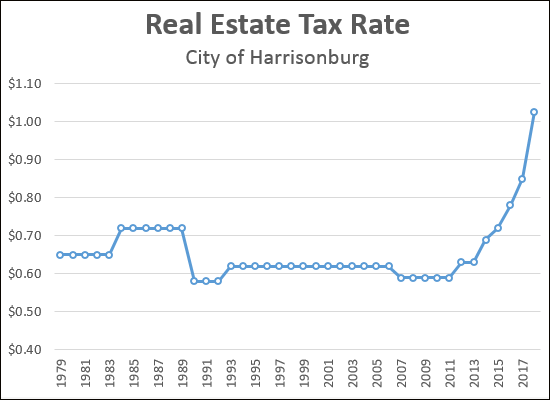 Per a reader's request, I have updated this super-long historical context of real estate tax rates in the City of Harrisonburg. This graph can be a bit deceiving in its attempts towards being legible -- the y-axis does not start at zero. As such, it makes some of the historical tax rates (around $0.60) seem closer to zero than they really are. That said, the trajectory of the real estate tax rate over the past five-ish years is quite striking in a historical context. OF NOTE -- the 2017 value ($1.025 per $100 of assessed value) is a proposed, not approved, tax rate. | |
Complete the Harrisonburg Retail Survey Today! |
|
 Take a few minutes to fill out this 19-question survey about the Harrisonburg area that will ask you about yourself, your internet use and our shopping habits. This survey is being used to determine what gaps exist in what is being provided by local retailers, with the hopes of using the data to attract further retailers to our area and to enhance existing businesses. Read on from the Daily News Record.... Survey Seeks Data To Lure Retailers | |
How do YOU think Harrisonburg should accommodate an increasing high school student population? |
|
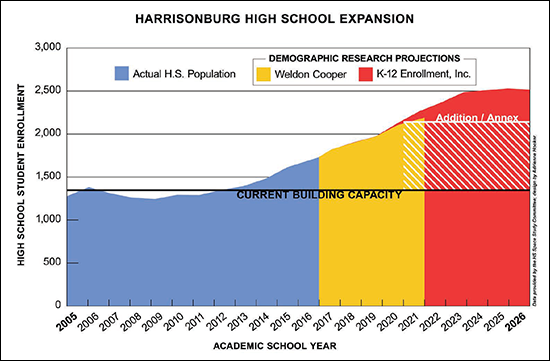 Have you heard? There are more high school students to be taught in Harrisonburg than can readily fit inside of the high school! There are three options being considered:
 A rendering of the potential ADDITION from Mosely Architects.... 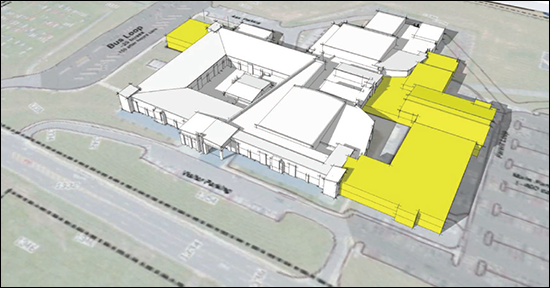 There are pros and cons of each option, but the High School Space Study Committee has recommended building a new high school. But YOUR OPINION is wanted, needed, welcomed! Click here to read up on the options, pros and cons. Click here to voice your opinion. | |
Construction Progressing on Bluestone Elementary |
|
 click the image above for a larger version of this photo Construction is moving right along on Bluestone Elementary, being built on Garbers Church Road across from Harrisonburg High School. Excerpts follow from an April 23, 2016 Daily News Record article....
| |
How Much Will A New High School Cost City Homeowners? |
|
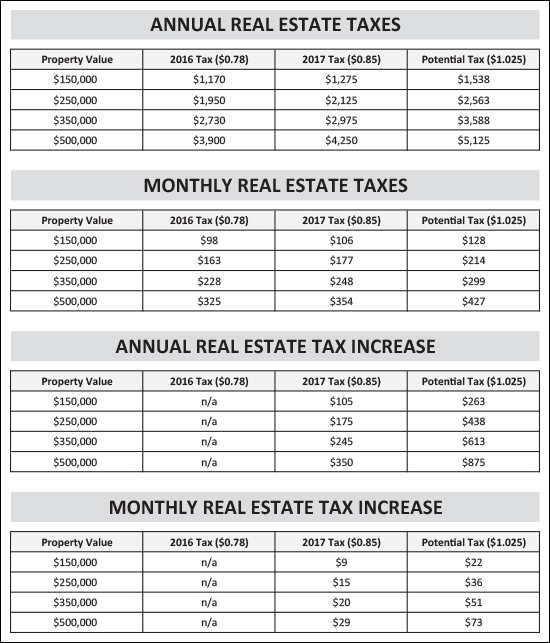 Here is a grand oversimplification:
As shown above, it depends on the value of your home. These examples are based on the potential need for a $0.175 increase (per $100 of assessed value) in the tax rate. Increasing the tax rate from $0.85 to $1.025 would result in....
So -- yes -- this would be a drastic increase (20.5%) one-year increase in the real estate tax rate. But when broken down to the actual increased cost per month, it does not seem quite as overwhelming. Further reading from the Daily News Record: | |
22 Unit Apartment Building Proposed at edge of Purcell Park neighborhood |
|
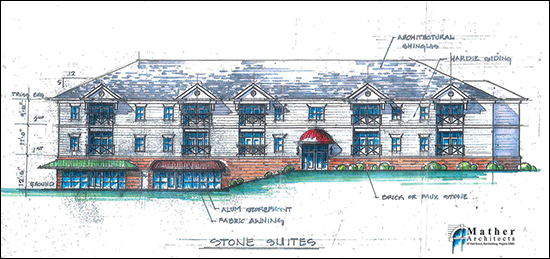 click the image above for a larger version The apartment building shown above may soon be built on South Main Street at its intersection with East Weaver Avenue -- on the edge of the Purcell Park neighborhood.... 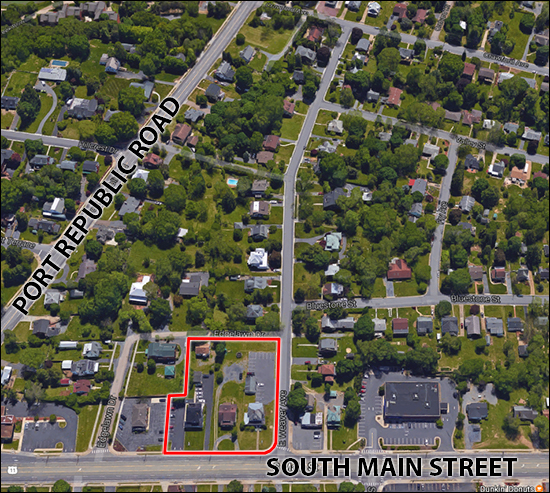 click the image above for a larger version 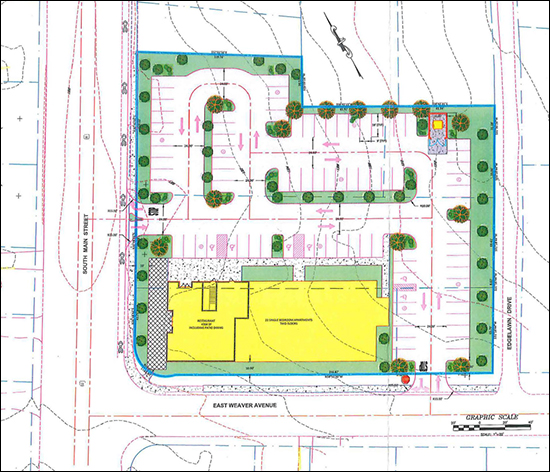 click the image above for a larger version This is a complicated issue, as outlined in the lengthy portion of the Planning Commission's packet addressing this potential rezoning. This Wednesday, the developer will present their proposal to the Planning Commission, and neighboring property owners will likely also be making their case for why this rezoning (etc.) should not be approved. Some highlights....
The bottom line here seems to be that the property (properties) in question have high traffic count road frontage, yet also adjoin a low density residential neighborhood in the back. Should the use of these properties continue to be low/medium density residential use as currently approved? Or should the City allow the property owner to rezone them to allow for a much denser use of the land? You can read the entire packet of information to be reviewed and considered by the Planning Commission here. | |
Proposed Budget for Rockingham County |
|
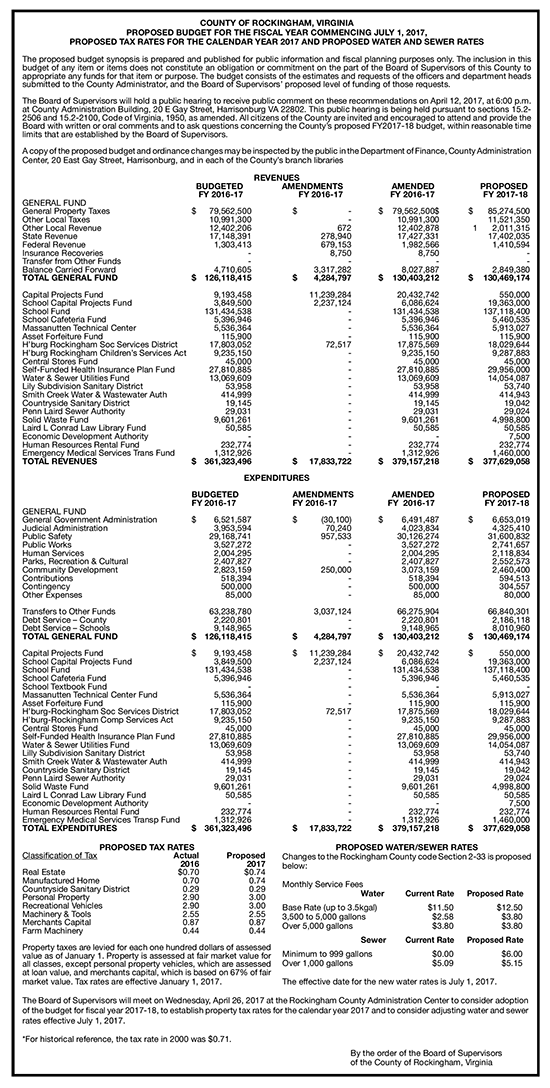 Click on the image above for a PDF of this summary of the proposed 2017-18 Rockingham County budget. As shown, this would require the real estate tax rate to increase from $0.70 to $0.74. Which turns out to be less than the proposed increase in the City of Harrisonburg.... 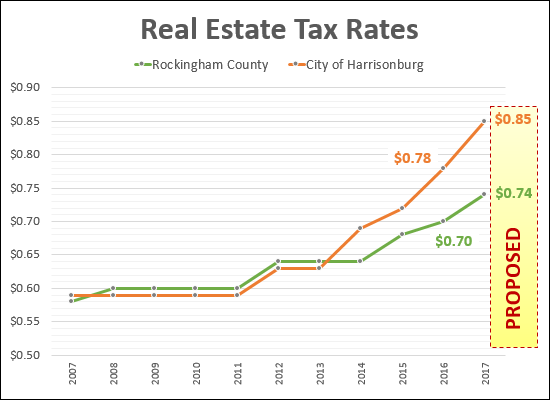 Read lots more about WHY the tax rate needs to increase here.... County Eyes More Taxes, Fees Daily News Record, April 5, 2017 No Comments At Budget Hearing Daily News Record, April 13, 2017 | |
| Newer Posts | Older Posts |
Scott Rogers
Funkhouser Real
Estate Group
540-578-0102
scott@funkhousergroup.com
Licensed in the
Commonwealth of Virginia
Home Search
Housing Market Report
Harrisonburg Townhouses
Walk Through This Home
Investment Properties
Harrisonburg Foreclosures
Property Transfers
New Listings

